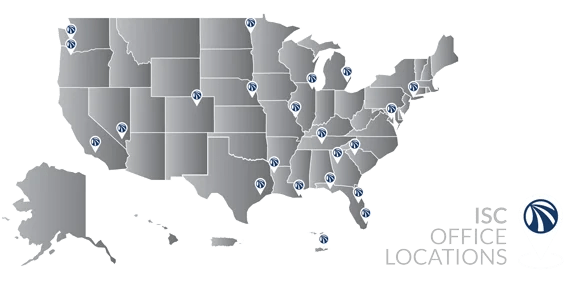
In the wake of a disaster, the road to recovery can be long and arduous. Applicants are often left to navigate a complex maze of requirements, deadlines, and paperwork, all while trying to rebuild
their lives and communities. The consequences of not following proper protocol can be severe, leading to denied or de-obligated funds, leaving applicants without the resources they need to
recover.
At Integrated Solutions Consulting, Corp. (ISC), we understand the challenges applicants face in securing funding for repairs and restoration. With years of experience in Emergency Management and Disaster Recovery consulting, we’ve seen firsthand the devastating impact of not following proper procedures. That’s why we’ve compiled a list of helpful hints to guide applicants through this difficult time
- Establish a Cost Code and Database: Create a dedicated accounting cost code to track all disaster-related expenses, including invoices, purchase orders, contracts, rentals, and force account labor (FAL). Additionally, set up a centralized database and logical file system for all parties to upload and track response and repair costs for damaged buildings, structures, roads, and facilities.
- Monitor Category B Expenses: Pay close attention to Category B expenses, such as FAL, force account equipment (FAE), rentals, emergency contracts, and purchases, as these can easily be overlooked
- Adhere to FEMA Debris Policies: Ensure compliance with all FEMA Category A debris policies to prevent de-obligation of funds
- Document Damages Thoroughly: Identify and document all damages to buildings, structures, roads, and facilities. Include physical addresses, zip codes, state and federal road/highway numbers, and GPS coordinates in individual files within the database. Create written narrative scopes for each identified damage, detailing when and how they occurred, including any mechanical, electrical, plumbing, lighting, or equipment issues.
- Capture Detailed Damage Assessments: During damage assessments, take multiple photos from various angles and zoom levels. If possible, take accurate measurements of all damages and include sketches to convey the extent of the damage. If detailed assessments are not possible during the first visit, schedule a return date to gather all required damage, description, and dimensions (DDD) information.
Written By: Glen LaFond
Senior Disaster Recovery
Consultant
Glen LaFond has more than
25 years combined of
Emergency, Construction,
Project, and Financial
Management experience in
both the public and private
sector. For the past 15 years,
Glen has worked on 16
disasters, including
hurricane, flood, wind, and
earthquake hazards.


- Utilize GPS Technology: Record GPS coordinates of all damages at the center or front entrance of buildings, or at start and stop locations for roads, fences, and linear-type damages. Consider using camera apps like ‘Solocator’ that include GPS coordinates on photos.
- Gather and Retain Relevant Documents: Collect all policies (insurance, procurement, labor, etc.) that FEMA will request. Retain any insurance-related documents, reports, cost estimates, and discussions, as well as damage-related documents, reports, estimates, and quotes.
- Communicate with FEMA Before Repairs: Before starting demolition and repair work, discuss the status with FEMA or ISC to ensure compliance and eligibility.
- Explore Mitigation Opportunities: Look for opportunities to strengthen facilities before repairing or rebuilding to mitigate future damage
- Follow Federal Procurement and Contracting Requirements: Adhere to all Federal procurement and contracting requirements (2 C.F.R. Part 200) to prevent de-obligation of funding later in the process.
- Partner with ISC: Consider hiring ISC to conduct site inspections and assist with the above guidance. Our experience and software suite of services can help maximize grant dollars while saving money in the long run.
The consequences of not following these guidelines can be severe. Applicants may find themselves facing denied or de-obligated funds, leaving them without the resources they need to rebuild and recover. In the worst cases, communities can be left in ruins, with critical infrastructure and facilities left unrepaired for years.
Don’t let disaster strike twice. By following these helpful hints and partnering with experienced professionals like ISC, applicants can navigate the complex postdisaster funding process more effectively and efficiently. Our team of experts is here to help you every step of the way, from initial damage assessments to final closeout. Together, we can help you build a stronger, more resilient community in the face of disaster.


